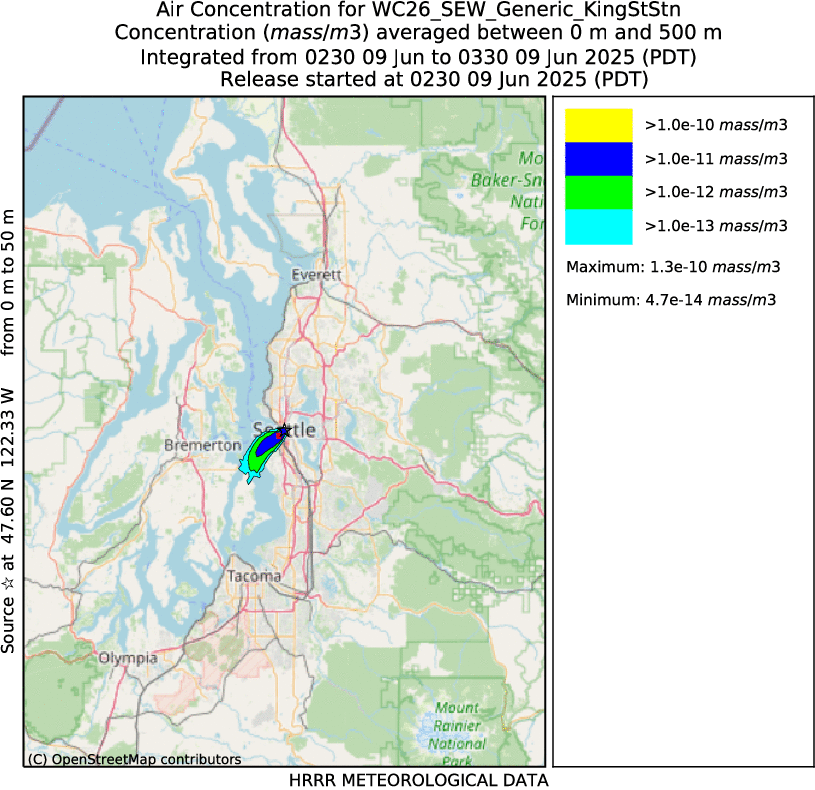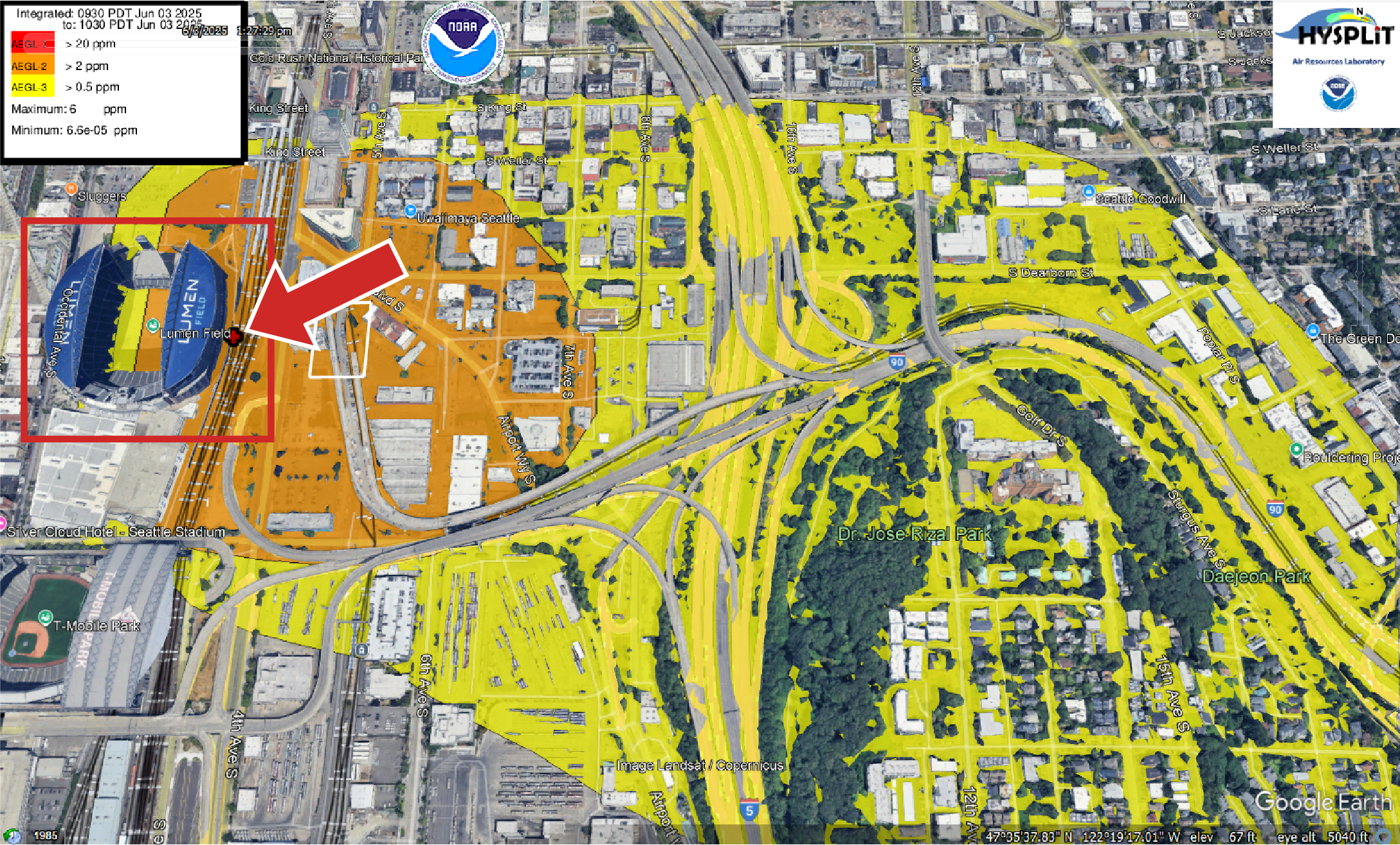June 3, 2025
Last week, the Weather Forecasting Office (WFO) in Seattle, WA contacted ARL’s HYSPLIT Modeling Team to help with preparations at Lumen Field for both the FIFA Club World Cup, beginning on June 14, and the FIFA World Cup in 2026.
ARL frequently provides specialized, hypothetical HYSPLIT dispersion forecasts to WFOs around the country as cities prepare for large public events. The HYSPLIT model takes into account many factors including weather and how chemicals react, disperse and travel once released into the atmosphere; allowing it to accurately forecast how and where a hazardous material will travel.
These forecasts provide critical information to emergency managers who can react quickly to protect people at the event, the surrounding community members and first responders. Last week, the WFO in Seattle requested forecasts for the FIFA Club World Cup and FIFA World Cup at Lumen Field in five different local areas, three of which were specifically to model chemical plume forecasts. This is the first time a WFO has asked the HYSPLIT team to model a specific atmospheric material instead of just a generic atmospheric release during these preparations.
In response, ARL created custom HYSPLIT forecasts using the chemical spill scenarios provided by the WFO in Seattle. These automated forecasts provide one-hour averages of concentrations posted online and refreshed every hour for easy and continuous access to the forecasts.



